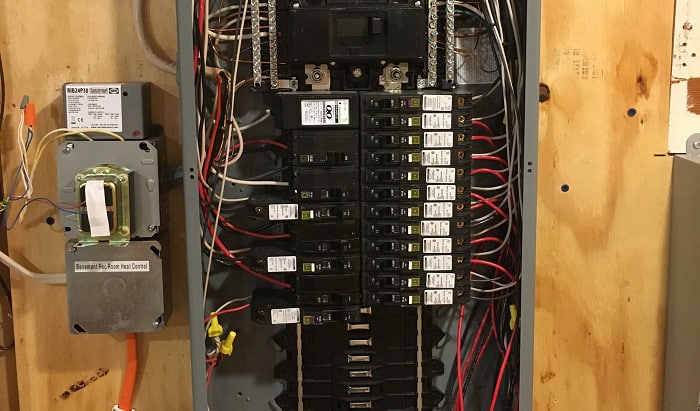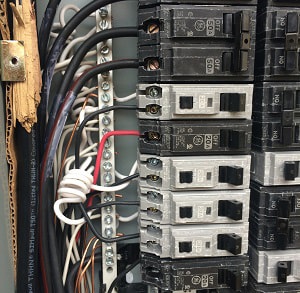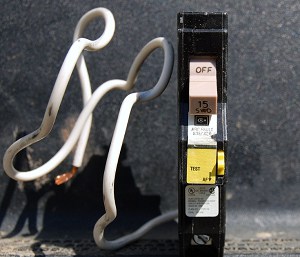Breakers are crucial as they play a key role in ensuring the safety and integrity of our circuits – preventing electrical hazards from happening in our properties.
Now, two of the common types of circuit breakers are AFCIs and CAFCIs. Homeowners may not know when to use which of these. However, they both are crucial in terms of safeguarding our electrical system.
That is why I wrote this guide on the distinction between AFCI vs CAFCI. If you want to know more about them, then read through my article.
Table of Contents
Differences Between AFCI and CAFCI
As I said earlier, AFCIs and CAFCIs are the two common circuit breakers available in the market. Both are very effective electrical instruments that prevent the onset of electrical mishaps.
However, despite the common role they have in ensuring the quality and integrity of our circuitry – there is a stark difference in how they specifically work.
What are AFCIs and CAFCIs?
- AFCI
AFCI breakers offer tremendous protection from all sorts of electrical accidents. But before we delve into the specifics and particulars of what this specific breaker is, let me first explain what AFCI stands for.
The AFCI meaning is Arc Fault Circuit Interrupter. From the name itself, AFCIs are breakers specifically concerned with preventing the onset of arc faults.
Let me explain to help you visualize what an arc fault is – in case you don’t know what it is yet. It is an electric discharge caused by two or, in some cases, more conductors that are within the vicinity of each other.
It is dangerous as it is strong enough to create electrical fire and even injure or kill people.
Hence, the National Electric Code of 2014 now requires us to use AFCI breakers in homes in order to mitigate the dangers of arc faulting – which cannot be prevented by regular circuit breakers.
Some arc fault circuit interrupter requirements are:
- Where are AFCI breakers required? 15A and 20A branch circuits in dwelling areas like living and dining rooms must have AFCI.
- The above requirement also applies to rooms in hotels and motels.
- ACFIs must be accessible.
- CAFCI
On the other hand, CAFCIs, or Combination Arc Fault Interrupters, are designed to be a more comprehensive version of AFCIs. A combination arc fault breaker is capable of detecting not only parallel but also series arcing.
To explain in much deeper detail, parallel arcing happens when a hot conductor carrying electricity makes contact with a non-hot conductor, sparking and creating an arc.
Compared to parallel arcing which transpires between two distinct wires, series arcing occurs within one circuit – such as when electricity jumps pass the gap between a wire and a terminal, creating an imbalance in the power flow.
How Do AFCIs and CAFCIs Work?
- AFCI
Now, AFCIs work by detecting the following types of arc faults and accordingly shutting off the flow of electricity to the affected circuits.
- Loose Wire Connections
As arc faulting can be caused by electrical pulses flowing out of conductors, wires with a loose connection can be a source of accidental arc faulting.
Screw terminals in the breaker box, between appliances, and within circuits that are not connected properly may interact with other wires, creating an accidental arc fault.
- Overheated Wires
As we already know, the integrity of a wire’s insulation is dependent on multiple factors. The environment it is exposed to, its flexibility and durability, and the capacity to tolerate heat are the chief considerations when it comes to insulation integrity.
That being said, wires that are conducting electricity of a higher demand would eventually create heat, which could damage the protective insulation.
This, in turn, could result in holes or openings in the insulation – creating gaps where electricity could flow and an arc fault in surrounding wires.
- Wires with Integrity Damage
Similar to the previous point, wires with insulation damage due to external factors such as being accidentally nicked by nails, appliances or furniture kinking the cord, and other physical forces could nonetheless impact the electricity flowing through them.
- Worn out Terminals
Terminals that serve as the end point of circuit lines are also at risk of creating arc faults.
Terminals exposed to wet environments could experience corrosion, another potential cause for arc faulting.
Aside from installing AFCIs, I also recommend that you check your circuits for signs of loose connections and corrosion in order to prevent arcing.
- CAFCI
To contrast, CAFCIs are capable of detecting accidental electrical arcing in the following circumstances:
- Hot Wire not Installed Properly
Series arcing is most potent in hot wires not being connected properly to contact screws and outlets.
- Loose Hot Screws
Hot contact screws that are not tightly connected to hot wires create gaps that could conduct series arcing.
In terms of placement, you can put CAFCI in place where AFCI is necessary.
Related:
CAFCI vs AFCI: Which is Better? Pros and Cons of Both
In the fight between CAFCI vs AFCI, it is apparent that one is better than the other. Specifically, CAFCI’s advantages are where AFCI could do better.
It is in this sense that CAFCIs are basically upgraded versions made to accommodate more safety measures compared to AFCIs. However, this doesn’t mean that I discount the tremendous safety capability that is built into AFCIs.
| CAFCI | AFCI |
|
|
What is the Difference Between AFCI and GFCI Breakers?
AFCI protects against arc faults, while GFCI protects against ground faults. The former targets electrical problems that occur inside walls, while the latter often deal with issues we can see within our homes (or outside of walls).
Related:
- AFCI Breaker Vs Outlet – What is the difference?
- Testing AFCI/GFCI Breakers – The most detailed guide
Conclusion
Knowing the difference between AFCI vs CAFCI is important for homeowners, who can decide which type to use for their properties.
Hopefully, this guide on AFCIs and CAFCIs helped you choose between the two.
If you have any clarifications, questions, or concerns whatsoever, please don’t hesitate to tell us. Thanks for reading!

I am Edwin Jones, in charge of designing content for Galvinpower. I aspire to use my experiences in marketing to create reliable and necessary information to help our readers. It has been fun to work with Andrew and apply his incredible knowledge to our content.





